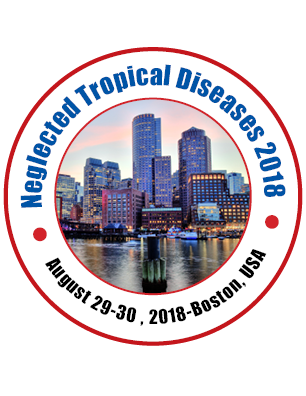
Ivana Haluskova Balter
French society of Immunology, France
Title: Innovative path to tackle neglected diseases : Restoring functionality of host immune system
Biography
Biography: Ivana Haluskova Balter
Abstract
Diseases neglected or omitted and neglected worth growing attention and new innovative immune/metabolic paths show real potential and overlapping approach to be undertaken. The fight against the Neglected Tropical Diseases receiving increased worldwide attention after the recent attribution of the 2015 Nobel Prize in Physiology or Medicine to William Campbell and Satoshi ÅŒmura for their development of a novel therapy against infections caused by roundworm parasites. Recently, WHO’s efforts to address growing global AMR (27th Feb 2017) and it highlighted, in particular, the threat of gram-negative bacteria but initially “neglected” growing world urgency of tuberculosis – XDR/MDR and latent in particular. Based on recent works natural defenses to infection are mediated by intrinsic/innate and adaptive immune responses. While our understanding is considerable it is incomplete and emerging areas of research such as those related to the immune-metabolic axis are started to be appreciated. Macrophages play a frontline role in this process connecting immunity, infection and lipid biology, and collaterally are a central target for infection by a wide range of pathogens including viruses and bacteria, especially intracellular bacteria such as mycobacteria. Clinical manifestations of disease severity in the infected host are likely to pay tribute to perturbations of the metabolic-immune phenomena found in lymphocytes and myeloid cells. Historically and consistent with this notion, vitamin D based oxysterols have had a long association with promoting clinical improvements to patients infected with Mycobacterium tuberculosis. M. tuberculosis has invested considerable genomic real estate to encode enzymes capable of exploiting and catabolizing these host-derived immune metabolites (1) Similarly, it appears that L (Leishmania ) parasites by decreasing membrane cholesterol during their intracellular life cycle may have altered the conformation of MHC-II molecules with direct bearing on the compromised agonist affinity leading to faster dissociation of cognate peptide from the peptide-MHC-II complex which could be corrected by liposomal cholesterol delivery. Several new paths to understanding host immune system interactions during L infection are looked at. Phagocytosis, a process known to be subverted by parasites like Leishmania (L). Indeed, the intracellular development of L amastigote relies on the biogenesis and dynamic remodeling of a phagolysosome, termed the parasitophorous vacuole. (2) It appears that L parasites by decreasing membrane cholesterol during their intracellular life cycle may have altered the conformation of MHC-II molecules with direct bearing on the compromised agonist affinity leading to faster dissociation of cognate peptide from the peptide-MHC-II complex which could be corrected by liposomal cholesterol delivery(4) Additionally or consequently CD8 T cells are driven to energy/exhaustion in human VL, which affect their ability to contribute to protective immune responses. (3) Effective approach capable of constraining the visceralizing parasites to the skin holds much promise as it would block colonization of the viscera, where these species are perfectly adapted for survival and subversion of the immune response. Based on recent works natural defenses to infection are mediated by intrinsic/innate and adaptive immune responses. Understanding the role of early metabolic mediators of inflammatory responses to infection, principles of immuno-metabolism will aid in the development of urgently needed HOST directed therapeutic, preventive (Vaccines) and diagnostic innovations knowing limitations of existing tools.

